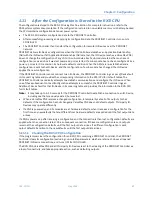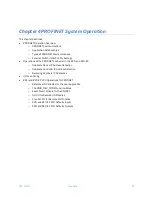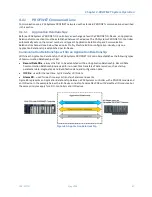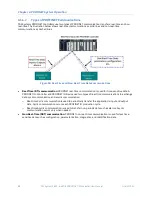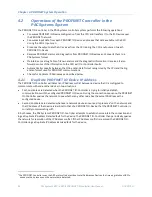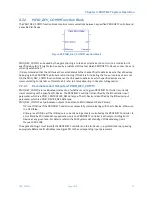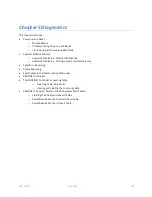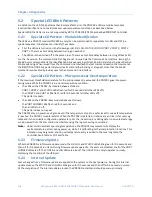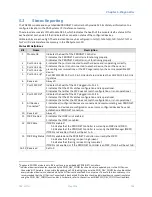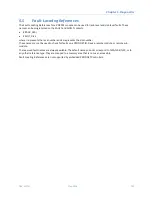
Chapter 4. PROFINET System Operation
GFK-2571N
May 2018
95
4.6
PROFINET IO Update Rate Configuration
Selecting PROFINET IO update rates is one of the primary means for adjusting performance of the system.
Consider the following when choosing an appropriate value.
•
In general, for most applications, there is little benefit to configuring PROFINET IO update rates faster than
half the CPU Sweep time. Scheduling PROFINET IO update rates faster than required by the application
creates unnecessary loading on the network, PROFINET Controller, and PROFINET IO devices.
•
Keep in mind that transferring IO over the PROFINET IO network could take up to one complete PROFINET
update cycle time for the transfer to actually occur. Since PROFINET IO production is asynchronous to the
source of the produced data, in the worst case the new production data could miss a PROFINET IO
production cycle, and thus must await the next cycle. Note, this means for an I/O loopback situation where
an application asserts an output and expects to see the output echoed on another input, there are two
PROFINET transfers involved, therefore it may take two PROFINET IO production cycles (one for each data
transfer).
•
It is possible that the PACSystems CPU, through application logic actions, can update output data for a
Remote IO Module faster than the usual I/O update rate of that remote I/O module. The application logic
must be careful not to update output data faster than the scanning of the Remote IO Module (which is a
function of both the PROFINET IO Update Rate and IO-Device Scan). Otherwise, output data from the CPU
may not transfer to the Remote IO Module before being overwritten by new output data from the
application logic.



